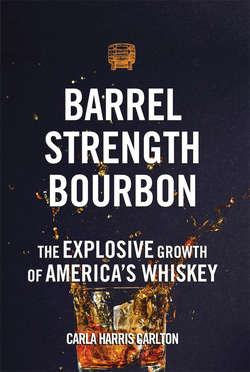Читать книгу Barrel Strength Bourbon - Carla Harris Carlton - Страница 16
На сайте Литреса книга снята с продажи.
“Wall Street for Whiskey”
ОглавлениеTo accommodate the growing number of steamboats, the city of Louisville built a canal that allowed the boats to bypass the Falls of the Ohio. River traffic grew exponentially with the opening of the Portland Canal in 1830, as did Louisville’s population. By 1850, Louisville was one of the 12 largest cities in America, bigger even than Chicago. The arrival of railroads made Louisville even more important as a transportation hub, with lines connecting the city to points north and west.
If you operated a distillery anywhere in the region, you shipped it from Louisville. Whiskey interests from all over opened offices and warehouses along a 12-block stretch of Main Street near the Ohio River that became known as Whiskey Row.
George Garvin Brown, cofounder of Brown-Forman distillery (Photo courtesy of Brown-Forman)
Whiskey Row was also the home of rectifiers, who created new products either by blending several whiskeys together or by blending whiskey with neutral grain spirits. While some of these products were legitimate, it was easy to tamper with them since bourbon was sold directly from a barrel. There was no way of knowing exactly what you were going to get, even from reputable distillers, because one batch could differ from the previous one.
In 1870, a young Louisville distiller named George Garvin Brown landed on a solution to the problems of consistency and potential tampering. His Old Forrester Bourbon, named for a Union Army hero, Dr. William Forrester, was the first bourbon to be sold exclusively in bottles. (Incidentally, Dr. Forrester was not old; he was probably in his early 30s. “Old” denoted that the bourbon was aged, which implied quality.) At some point in history, Old Forester lost one of its Rs, but it is still the flagship brand of the Brown-Forman distillery. Bottled bourbon did not become common until after 1904, when Michael J. Owens patented a machine that could make four uniform bottles per second.
Several other measures enacted in the late 1800s and early 1900s were designed to protect consumers and ensure authenticity in bourbon production. The Bottled-in-Bond Act of 1897 developed “Standards of Identity for Distilled Spirits,” among them that spirits had to be produced by one distiller in one distilling season at one US distillery, which was to be identified on the label; had to be aged in a federally bonded warehouse for at least four years; and had to be bottled at 100 proof. The “federally bonded” part made the government responsible for guaranteeing that the standards were met. Bonded warehouses were padlocked, and only US Treasury agents had a key.
In 1906, the Pure Food and Drug Act required that all products, including whiskey, carry a label that listed their contents. But what was “pure whiskey”? The chief chemist for the U.S. Department of Agriculture decided it was a spirit distilled from grain that was aged in oak barrels and had nothing added but pure water; anything else would have to be labeled as “imitation whiskey.” This upset the rectifiers, who were putting neutral grain spirits, flavoring, coloring, and who-knows-what-all into their whiskeys. President William Howard Taft finally settled the question “What is whiskey?” with the Taft Decision of 1909.
{ Just A SIP }
According to the Taft Decision, “straight whiskey” was to be made only from grain (not fruit or molasses) and water, and whiskey flavored with other spirits would be defined as “blended.” Taft allowed the terms bourbon and rye for identifying the dominant grain; the language was later expanded to account for grains such as wheat. And now you know something that President Taft did besides commission an oversize bathtub in the White House to accommodate his 340-pound girth.
By the turn of the 20th century, there were nearly 100 whiskey-related concerns operating on and near Whiskey Row in Louisville, according to the Louisville City Directory, and not just from Kentucky; they also hailed from places like Cincinnati, Chicago, and New York. “This was the greatest accumulation of whiskey companies in the world in one place at one time,” Chris Morris says. “It was like Wall Street for whiskey.”
Unfortunately for both Wall Streets, big crashes were coming.
